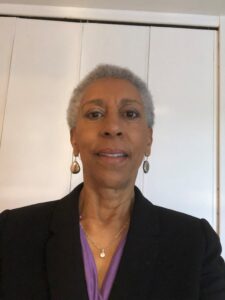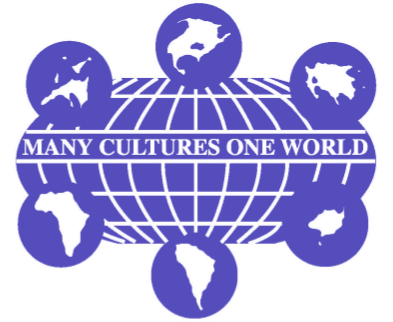 Health Disparities and Recognizing the Humanity in All People by Eleanor T. Campbell, EdD, RN
Health Disparities and Recognizing the Humanity in All People by Eleanor T. Campbell, EdD, RN
Health Disparities
The murder of George Floyd and the COVID-19 pandemic highlighted our knowledge of the institutional racism responsible for the treatment of black men and the health disparities among people of color. Over the past 10 years maternal morbidity and mortality rates have increased in the U.S. more than any other developed countries (USDHHS, 2022). This is particularly true for black and Latinx women who have higher rates of hypertension and diabetes, as well as women over 35 years (Hirshberg, & Srinivas, 2017). Hemorrhagic illnesses are also a significant contributing factor for poor health outcomes among this population.
Health statistics for leading health indicators continue to be poorest among black and Latinx populations despite the goals of Health People 2020 targeting these racial/ethnic groups. Language barriers for ESL and non-English speaking patients persists despite the presence of language lines in most hospitals due to the wide variety of dialects spoken among these and other recent immigrants. The lack of proper health facilities, and knowledge and understanding of cultural health care needs are the basis for reducing many of these disparities including COVID-19 (USDHHS, 2022). Lack of health insurance is a major factor for limited healthcare among immigrant and migrant populations who are the backbone of our food service industry. The scales are tilted lower for part-time, low wage earners who generally don’t have health care benefits despite working several jobs placing them at higher risk during the pandemic. These are the essential workers who continued doing their jobs until they became too ill to work.
A Beginning Discussion
In March of 2021 the Northeast Chapter of TCNS held our first in what was to be a series of forums on racial/ethnic bias in our communities that impact health care delivery. Our first session focused on The Black Lives Matter movement and ethnic bias against Asian American & Pacific Islanders (AAPI), and the history of racial/ethnic bias against African American (AA) and Latinx peoples. Informal presentations on biases, fears, and disparities among AAPI, AA and Latinx Americans (LA) were shared. The AAPI community has recently been the target of random physical and verbal attacks including one subway death in NYC related to the COVID-19 pandemic. These incidents caused outrage, fear, and anger as well as community support. AA and LA people have a history of being marginalized by many white communities, and beaten, and murdered by the police and others. These daily fears and attacks lead to anxiety and stress related illnesses, emergency hospitalizations, and death. The presentations generated much discussion among our diverse group of participants that included black, white, Asian, and Latinx members. The forum ended with a discussion on next steps and taking action to fulfill the social justice aspect of nursing and the mission of the Transcultural Nursing Society.
Where Do We Go from Here?
Our Transcultural Nursing theories are a foundation for where to begin. Our founder Madeleine Leininger said that we must learn about and respect other cultures and provide culturally congruent care. Campinha-Bacote (2002) explains that we must be first be culturally aware of our personal biases, gain knowledge and skill in providing culturally competence care, and most importantly to have the desire to learn and change. Purnell (2002) explains in his model that we can be unconsciously culturally incompetent and learn to become consciously culturally competent through cultural encounters with persons and communities that are similar and different.
The IOM Future of Nursing Report of 2010 identified the changing U.S. demographics as a reason to prepare and hire a more diverse nursing workforce to meet these challenges. These issues continue to be at the forefront of nursing to address the high rates of mental health issues (ANA, n.d). Other recommendations included educating, mentoring, hiring, and promoting more people of color and multi-lingual/nurses, nurse educators, and nurse executives (ANA, n.d; IOM, 2011).
Finally, our members shared a reading list as a beginning way to better understand the past and present-day issues surrounding race and social justice. A few of these books are listed below. While the Northeast Chapter has not yet scheduled a follow up discussion some ideas might include a discussion on one of the recommended readings. Let’s keep learning, talking, understanding, and be called to action. What’s on your reading list and action plan?
Di Angelo, Robin (2018). White fragility, why it’s so hard for white people to talk about racism. Boston: Beacon Press
Kehinde, Ibram X (2019). How to be an antiracist. New York: One World.
King Jr, M.L. (1967). Where do we go from here chaos or community? Boston: Beacon Press
Olu, Ijeoma (2018). So, you want to talk about race. New York: Seal Press.
Wilkerson, Isabel. (2020). Caste, The origins of our discontents. New York: Random House
REFERENCES
American Nurses Association (ANA) (n.d.). Minority Fellowship Program. https://www.nursingworld.org/practice-policy/workforce/minority-fellowship-program/
Campinha-Bacote, J. (2002). The Process of Cultural Competence in the Delivery of Healthcare Services: A Model of Care. Journal of Transcultural Nursing 13, 3. 181-184. https://doi.org/10.1177/10459602013003003
Institute of Medicine, (IOM), (2010). Committee on the Robert Wood Johnson Foundation Initiative on the future of nursing. The future of nursing leading change advancing health. Washington, DC: National Academies Press. https://pubmed.ncbi.nlm.nih.gov/24983041/
Hirshberg, A. & Srinivas, S.K. (2017). Epidemiology of maternal morbidity and mortality, Seminars in Perinatology. 41, 6. 332-337. https://doi.org/10.1053/j.semperi.2017.07.007.
McFarland, M. & Wehbe-Alamah, H. (2017). Leininger’s Transcultural nursing: Concepts, theories, research, and practice. 4th Edition. New York: McGraw-Hill.
Purnell, L. (2002). The Purnell model for cultural competence. Journal of Transcultural Nursing. 13., 3. 193-196.
USDHHS (2022). Healthy People 2030. Pregnancy and childbirth. In GBD 2015 Maternal Mortality Collaborators (2016). Global, Regional, and National Levels of Maternal Mortality, 1990–2015: A Systematic Analysis for the Global Burden of Disease Study 2015. The Lancet, 388, 1775–1812. https://health.gov/healthypeople/objectives-and-data/browse-objectives/pregnancy-and-childbirth
